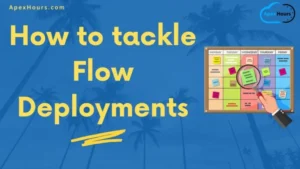Salesforce has become a cornerstone in the present era of business operations, allowing organizations to assist customer relationships, sales pipelines, and others. As a business grows, ensuring top performance inside Salesforce becomes important. Join and learn about how to Optimizing Salesforce Performance – Best Practices for Speed & Efficiency.
Due to its astounding options for customization and abilities, Salesforce has been the primary pick for all organizations, irrespective of their industry and size.
Customization of workflows, efficient data management, and adherence to the best practices are crucial for maximizing the platform’s potential.
Have a look at the best practices for the optimization of Salesforce performance regarding speed and efficiency –
1. Data Model Optimization
First and foremost, the data model is one of the crucial aspects of Salesforce performance. It is imperative to know that designing an efficient data model is needed. This consists of reducing the usage of custom fields where possible, defining proper relationships within objects, and avoiding unimportant nested relationships that can majorly impact query performance.
2. Data Archiving & Cleanup
After a certain period, a massive amount of data can be collected by Salesforce organizations, impacting the performance during storage operations and data retrieval. Going for a data archiving strategy to offload historical data to external storage or using native archiving solutions of Salesforce can be beneficial for maintaining optimal performance.
Learn about Data Archiving and Backup Salesforce.
3. Indexing Strategy
There is a key role played by indexes when it comes to database performance. Making custom indexes on frequently queried fields paves the way for a substantial improvement in query response times.

It is essential to analyze what fields are regularly used in list views, and reports, which can help to plan accordingly to create custom indexes.
Learn about Large Data Volumes (LDV) in Salesforce.
4. Governor Limits Awareness
Salesforce ensures a fair allocation of resources between users by implementing governor limits. Awareness of these limits and designing solutions that work effectively inside such restrictions is important for optimal performance.
This can consist of optimizing code for efficient usage of resources, avoiding unimportant queries in loops, and bulking operations.
Learn more about Governor Limits in Salesforce.
5. Using Asynchronous Processing
For tasks that do not need quick user feedback due to their long-running procedure, taking the assistance of asynchronous processing can enhance the performance of a system.
Several things are involved, including Batch Apex for big data operations, Queuable Apex for better flexibility, and taking advantage of Platform Events for event-driven architectures.
6. Monitoring & Tuning
There needs to be a continuous check of Salesforce performance to find areas that can be improved and identify bottlenecks. Salesforce provides different tools, including the Lightning Usage App, Developer Console, and Event Monitoring to check performance metrics and fine-tune configurations for top-tier performance.
Learn more about Monitoring & Auditing Tools in Salesforce.
7. Optimized Lightning Components & Visualforce
If a business uses Lightning components and Visualforce pages, it is essential to optimize their performance. Certain tasks need to be followed for optimization, including, reducing the usage of complex queries or operations inside these components, optimizing JavaScript, leveraging caching wherever applicable, and CSS resources for quick rendering.
Conclusion
Optimizing Salesforce performance is a multifaceted approach that goes through multiple processes. These include efficient coding practices, continuous monitoring, and a thoughtful design. After opting for these practices, businesses can ensure their Salesforce instance operates with a high precision efficiency.
This allows users the best responsive experience while managing important business processes. I hope this will help you to understand how to Optimizing Salesforce Performance – Best Practices for Speed & Efficiency.





